X-RAY RUNS: Apply for Beamtime
2017 Nov 1 - Dec 21
2018 Feb 7 - Apr 3
2018 Proposal/BTR deadline: 12/1/17
2018 Apr 11 - Jun 4
2018 Proposal/BTR deadline: 2/1/18
_______________________________________________
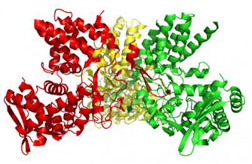
The atomic structure of influenza A virus
nucleaoprotein.
(Credit: Jane Tao/Rice
University)
Potential New Target for Influenza
HOUSTON, Dec. 6, 2006 -- Rice University
Striking new research, from Rice University and the University of Texas at Austin (UT), has revealed a potential new target that drug makers can use to attack several strains of influenza, including those that cause bird flu as well as the common variety that infects millions each flu season.
The research, published online today by Nature, offers tantalizing evidence of a potential drug target in a flu protein called nucleoprotein, or NP. NP plays a vital role in all strains of influenza A, including Hong Kong flu, Spanish flu and bird flu.
Lightsources.org links: http://www.lightsources.org/cms/?pid=1001815, (pdf)
Nature article (may require subscription):
http://www.nature.com/nature/journal/
vaop/ncurrent/abs/nature05379.html
online: 12/07/2006
_______________________________________________
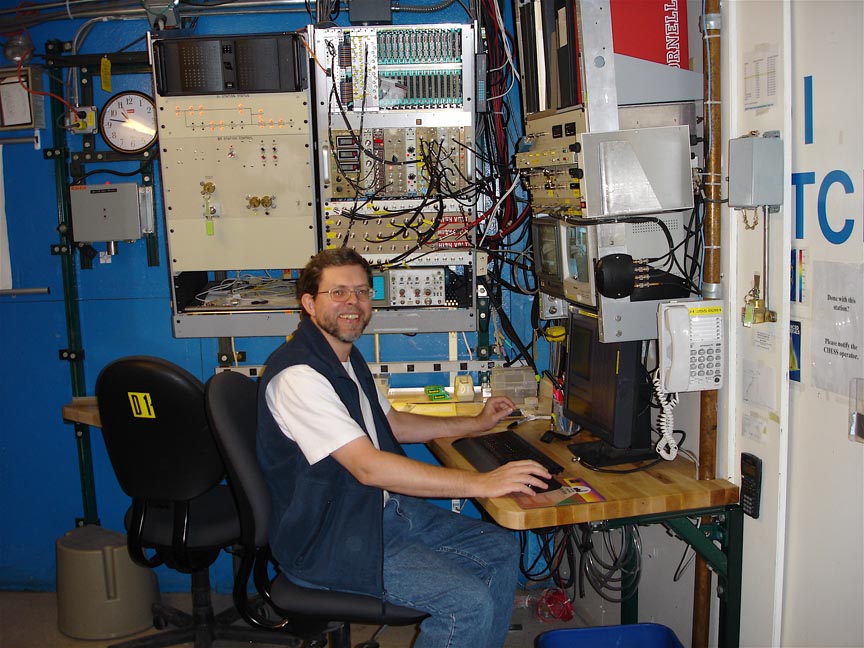
Upgraded SAXS beamline at CHESS
The x-ray beamline called “D-line” at the Cornell High Energy Synchrotron Source (CHESS) has served many purposes over the years but had consistently had one major problem: lack of space for the users! More...
online: 11/28/2006
_______________________________________________
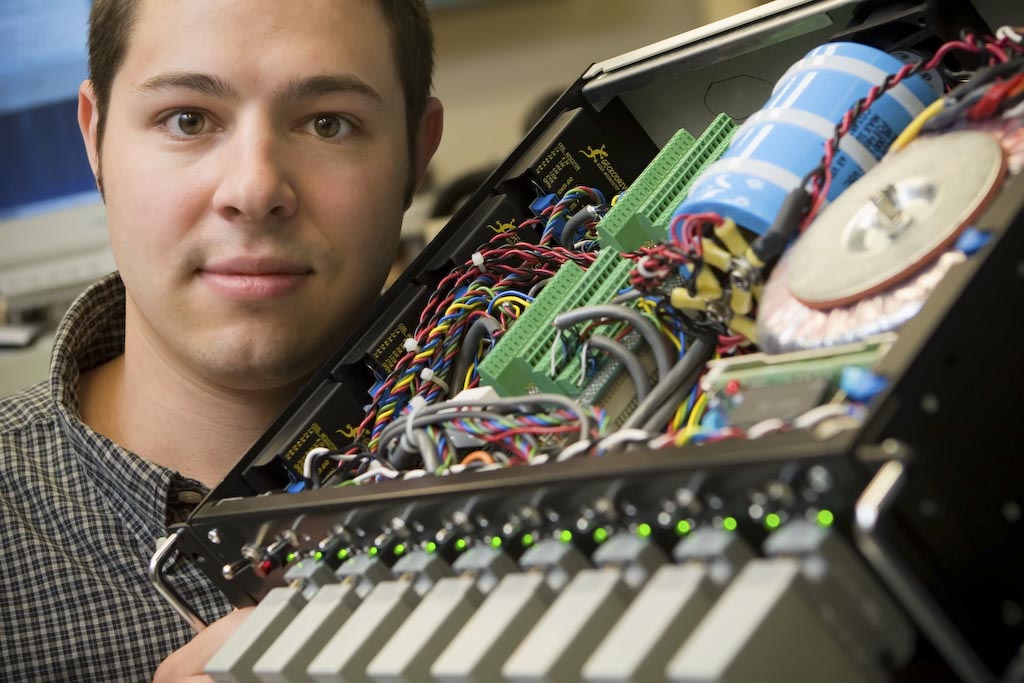
New CHESS Motor Drive System Makes
Big Instruments
Portable
"One of the biggest problems with moving instruments around the lab is having to hook up, reconfigure, verify and troubleshoot computer-controlled stepping motors", according to head operator Chris Conolly. Eric Edwards new chassis is a compact, cost effective way to use modern industry standard parts. More...
online: 11/15/2006
_______________________________________________
CHESS Users' Meeting 2006 Report
For those of you who don't receive the journal "Synchrotron Radiation News", the following Users' Meeting report came out in the Volume 19, No. 5, September/October issue.
Full Article...(html)
SRN...(pdf)
online: 11/09/2006
_______________________________________________
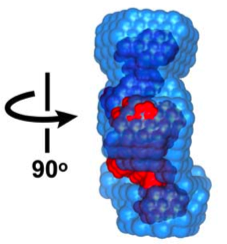
Study Holds Promise for New Way to Fight AIDS
For years researchers have been trying to understand how a few HIV–infected patients naturally defeat a virus that otherwise overwhelms the immune system. Last year, a research team at the University of Rochester Medical Center confirmed that such patients, called long–term non-progressors, maintain higher than normal levels of the enzyme called APOBEC–3G (A3G) in their white blood cells, which function to stave off infections. Now, the same team, led by Joseph Wedekind, has teamed up with structural biologist Richard Gillilan (MacCHESS) to provide the first look at the A3G structure. Such information represents an early step toward the design of a new class of drugs that could afford to all the same natural protection enjoyed by few, according to a study published today in The Journal of Biological Chemistry.
Full Article...(pdf)
online: 11/02/2006
_______________________________________________
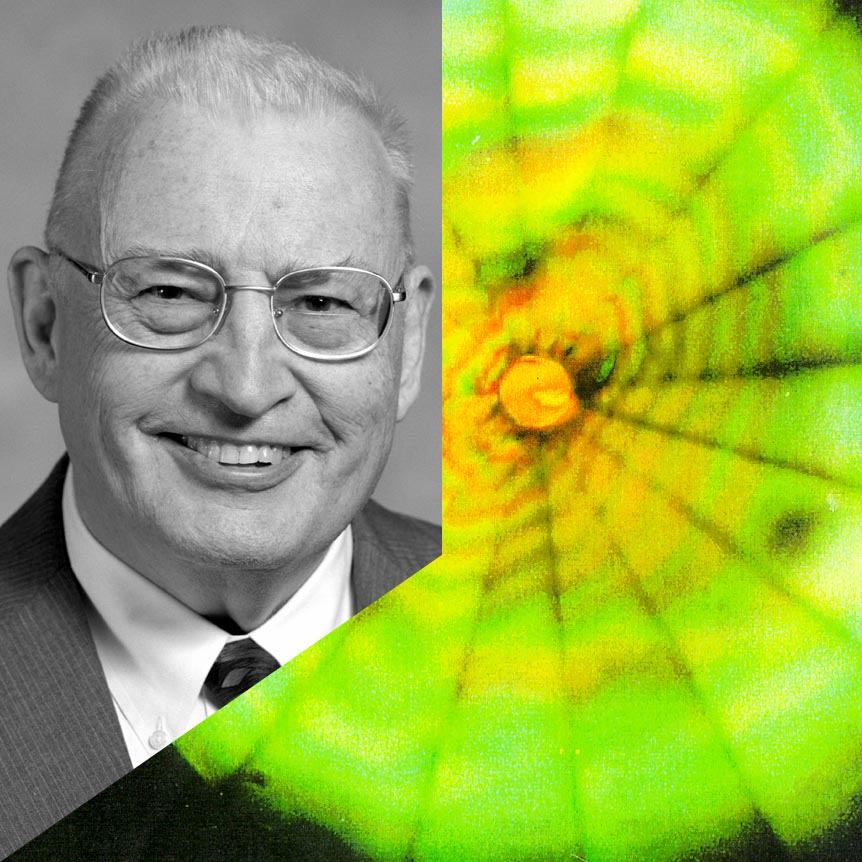
Golden Anniversary for Founder of High-pressure Program at CHESS
Ithaca, NY - The life and career of Arthur L. Ruoff was celebrated on September 18, 2006 on the occasion of his 50th anniversary as a Cornell Professor. Ruoff, the Class of 1912 Professor of Engineering, was honored by fifteen speakers who recalled fondly his career as both an innovative scientist in the field of high-pressure research and a dedicated educator and advisor..
Read more... (html)
Full Article...(pdf)
online: 10/30/2006
_______________________________________________
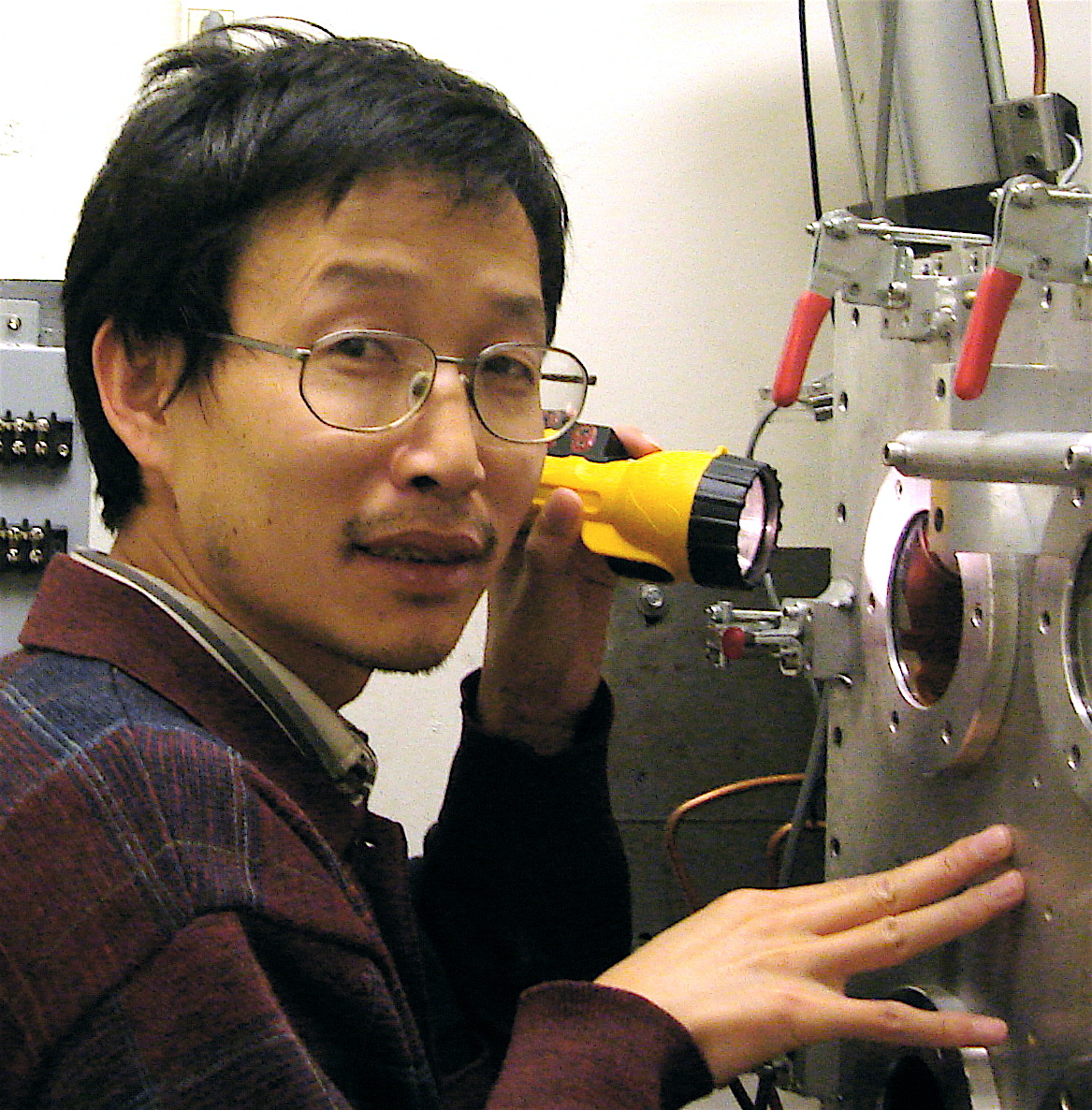
Dr. Zhongwu Wang Joins CHESS as Expert in High-pressure Research
Ithaca, NY - Dr. Zhongwu Wang was appointed to the position of staff scientist at the Cornell High Energy Synchrotron Source (CHESS) on September 1, 2006. He comes to the lab as an experienced “user” of the facility and takes over as the leader of the high-pressure sciences program. He also becomes the lead station scientist for the B1 and B2 experimental stations.
Read more... (html)
Full Article...(pdf)
online: 10/24/2006
_______________________________________________
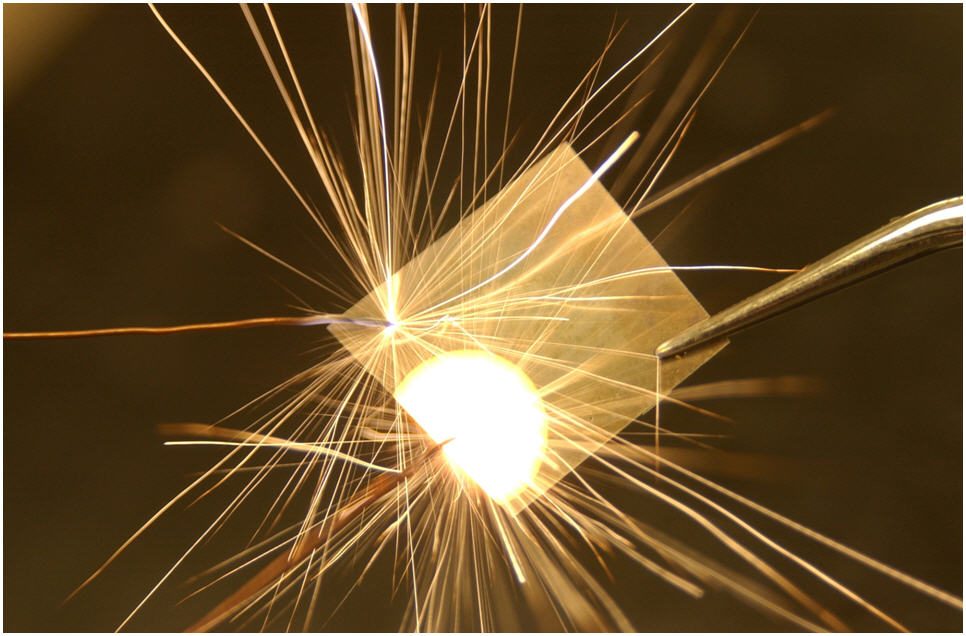
Semi-annual Student Symposium Highlights Graduate Work at CHESS
Ithaca, NY -- 30 students, faculty, postdocs and CHESS scientists shared dinner and three presentations at the fourth G-line Student Symposium convened at Wilson Laboratory on September 19th. The symposium is held twice each year to highlight work by Cornell graduate students who perform x-ray science programs at the Cornell High Energy Synchrotron Source (CHESS). The three G-line experimental stations they use – G1, G2 and G3 - are maintained and run by the graduate students themselves. Given so much responsibility the students, in addition to doing unique x-ray science, also learn how to design and build the research instruments they need. This is a rare educational opportunity not commonly found at other national synchrotron lightsource facilities.
Read more... (html)
Full Article...(pdf)
online: 10/09/2006
_______________________________________________
High School Teachers Meet X-ray Science and NSF Director at CHESS
Ithaca, NY -- High school teachers Julie Oberly and Robert Santavicca took a summer break from teaching to put on their thinking caps and learn about x-ray science during a six week visit to CHESS, the Cornell High Energy Synchrotron Source. For their hosts at CHESS, Julie and Robert represent talented “helpful hands” for the summer and a chance to make some real progress on much needed projects.
Read more... (html)
Full Article...(pdf)
online: 10/09/2006
_______________________________________________
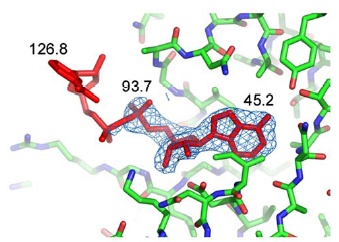
Ion Transporter Mechanism: Pressure-freezing Helps See Important Details
KtrA, the regulatory ("RCK") domain of the KtrAB K+ transporter, is important in controlling potassium concentrations in the cell. Previous structural studies of RCK's disagreed about the arrangement of these molecules in functional complexes. Crystal structures by Morais-Cabral and co-workers reveal that KtrA forms various octameric ring forms, ranging from "squares" to "rectangles". The bound NADH ligand (red in the figure; numbers are B-values) was clearly seen only when crystals were pressure-frozen . A new model for KtrAB has been developed that provides insight into how this important transporter works. The work was recently published in Cell. More details are given
Read more... (html)
Full Article...(pdf)
online: 10/03/2006
_______________________________________________
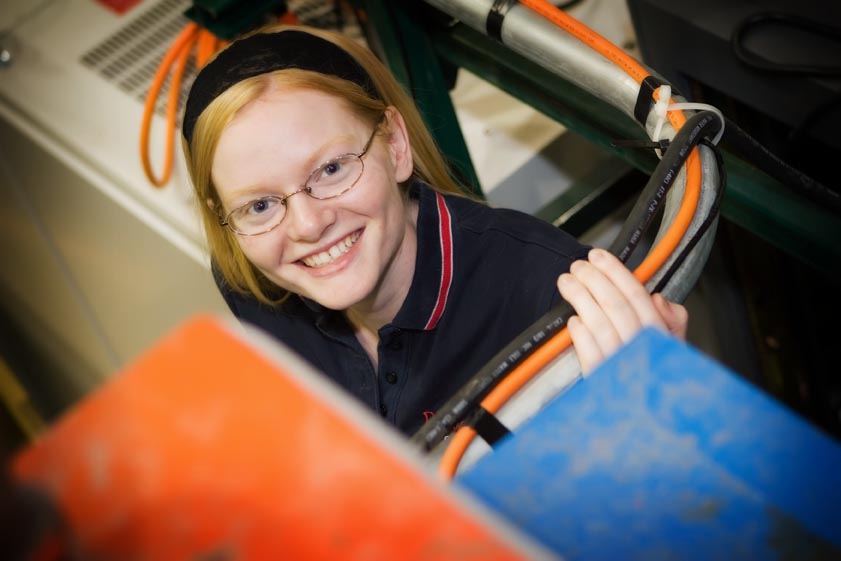
What, spend your summer vacation doing physics at CHESS?
Sixteen college students had very non-traditional summer vacations – opting to fill the halls of Cornell’s Newman and Wilson laboratories with their smiling faces and ten weeks of intense discussion about – of all things – physics!
Read more... (html)
Full Article...(pdf)
online: 09/27/2006
_______________________________________________
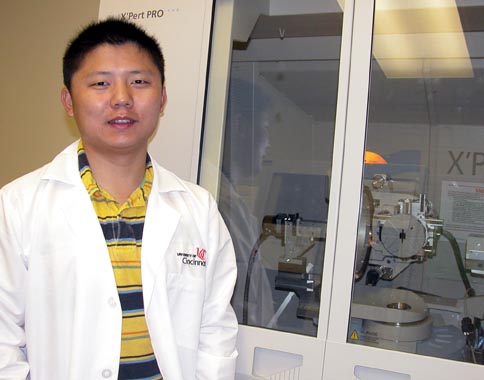
ACA Etter Award for Anti-corrosion Scattering Studies
Peng Wang was recently awarded the Margaret C. Etter Student Lecturer Award 2006 given by the American Crystallographic Association during their 2006 annual meeting held in Honolulu, Hawaii. His presentation covered two component silane-epoxy systems and he used GISAXS measurements from CHESS to study phase separation in thin films.
Read more... (html)
Full Article...(pdf)
online: 09/20/2006
_______________________________________________
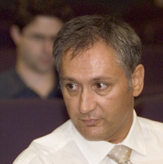
Exciting Questions about Future X-ray Science at CHESS ERL Workshops
Materials science, soft matter, high-pressure, biology, the ultrafast and nanobeams were topics of discussion for 96 invited speakers and 420 participants from around the world over a two-week period this past June at Cornell University. “Give us ‘one good idea’ for an experiment enabled by an ERL” was the agenda set for each participant by Sol Gruner.
Read more... (html)
Full Article...(pdf)
online: 09/15/2006
_______________________________________________
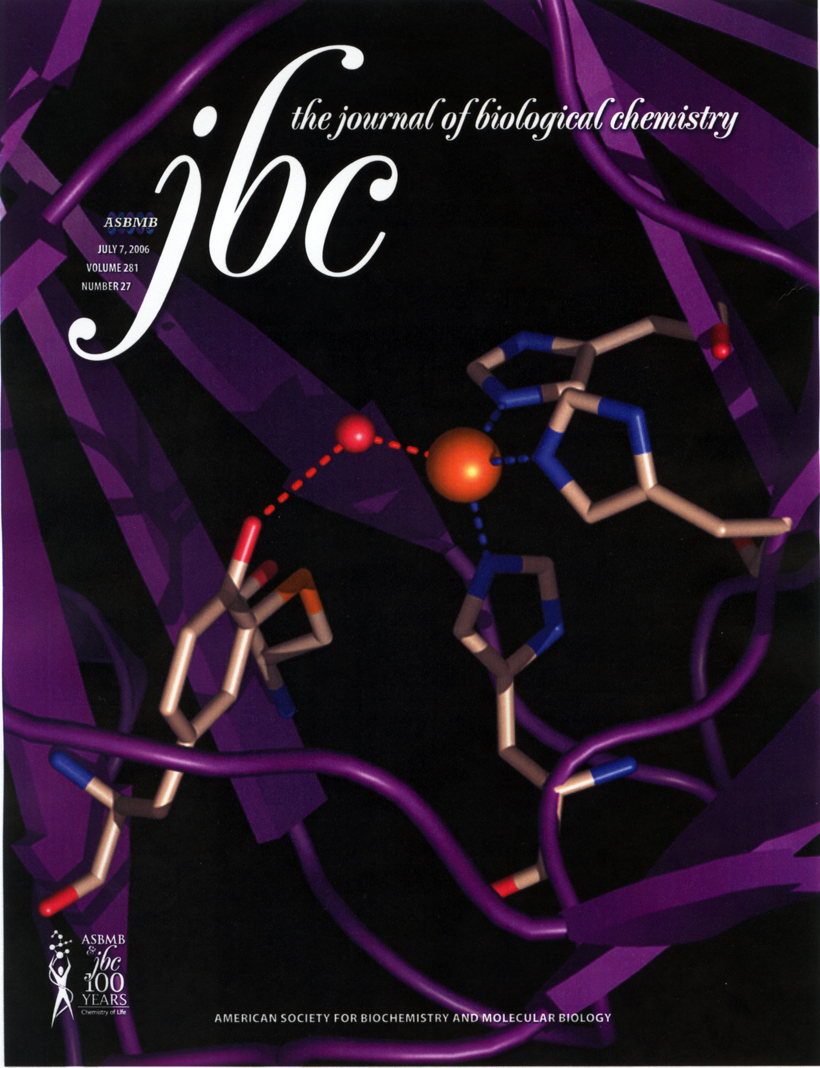
Iron Atom Central to Enzyme's Function of Adding Oxygen to Cysteine
The iron-containing enzyme cysteine dioxygenase (CDO) catalyzes the oxidation of the sulfur-containing amino acid cysteine, an important step in several critical metabolic pathways involved in sulfate regulation. A recent crystal structure for mouse CDO was informative, but contained nickel rather than the natural iron. Chad Simmons, with the help of various Cornell (and one former Cornell) co-workers, has now obtained a structure for rat CDO with Fe in place (brown ball in the view into the active site, above), allowing creation of a framework for understanding the molecular mechanism of cysteine oxidation.
Read more... (html)
Full Article...(pdf)
The work was reported in a cover story in J. Biol. Chem.
online: 08/23/2006
_______________________________________________
Governor Announces $12 Million for New High Tech Project at Cornell
George E. Pataki today announced $12 million in capital funding to Cornell University to support the development of a state-of-the-art Energy Recovery Linac (ERL), an extraordinary new x-ray source that will greatly expand scientific research capabilities. The Governor was joined at the event by Cornell Vice Provost for Research Robert C. Richardson, ERL Principle Investigator and Cornell professor of physics Sol Gruner, and a group of enthusiastic students from Ithaca’s Sciencenter.
Full Article...html
Ithaca
Journal... (pdf)
Cornell
Chronicle...(pdf)
lightsources.org...(pdf)
online: 08/21/2006
_______________________________________________
![]()
Homework 101: collect data 24 hours a day at CHESS!
There's no better way to teach students about crystallography and diffraction, according to Matt Miller, professor of Mechanical and Aerospace Engineering (MAE) at Cornell, than to assign them a 24 hour per day homework assignment at the local synchrotron x-ray facility.
Read more...(html)
online: 08/21/2006
_______________________________________________

Measuring Forces Between DNA Molecules
The Pollack group in the School of Applied and Engineering Physics at Cornell University has recently shown that careful x-ray measurements can be used to get quantitative information about the electrostatic interactions between DNA molecules in solution. Their work was published recently in a Physical Review Letter article entitled “Measuring Inter-DNA Potentials in Solution".
See the full article here (pdf),
(html)
Lightsources.org science highlight 8/11/2006.
online: 08/10/2006
_______________________________________________
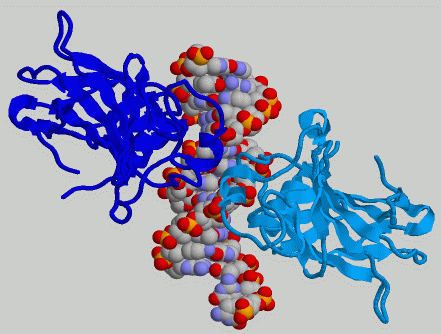
Structure of p53 bound to DNA illuminates how mutations in this tumor suppressor protein cause cancer
The p53 "tumor suppressor" protein binds to DNA to regulate cell growth; mutations that cause this function to go awry often result in cancer. P53 functions as a pair of dimers, but the only previous p53/DNA structure contained only a monomer. Now Ronen Marmorstein and colleagues, using CHESS data, have determined the structure of a p53 core domain dimer in complex with DNA. This structure reveals that mutations at the dimer interface, as well as at the protein-DNA interface, can cause cancer, and allows construction of a model for the active p53 tetramer. Read more in the press release from the Wistar Institute (PDF), copied on Lightsources.
See the full article here (pdf)
online: 08/07/2006
_______________________________________________
Chemistry Ph. D. Blasini Built Fuel Cell Materials Program at CHESS
Daniel R. Blasini was recently awarded his Ph. D. degree for his thesis entitled “Characterization of Thin Films and Thin Film Phenomena in Electrochemically Active Systems via X-Ray Methods.” While studying with Héctor Abruña, professor of chemistry and chemical biology, Blasini spent almost five years using x-ray techniques applied to chemical systems at the G2 experimental station at CHESS, the Cornell High Energy Synchrotron Source. His work encompassed basic research into materials needed for advancing technologies in organic light-emitting diodes (OLED) and fuel cell energy sources.
See the full article here (html), pdf
Lightsources.org feature
article 7/27/2006
online: 07/24/2006
_______________________________________________
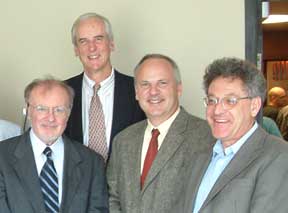
Physics Labs Consolidate to Build a New Accelerator
Two of Cornell's major research organizations have combined into a single entity, reflecting the increasingly interdisciplinary nature of their work, their mutual interest in Cornell's particle-accelerator facilities and their plans to develop a new linear accelerator in the coming years. More...
See the full article here (html)
Cornell Chronicle: online, pdf
online: 07/14/2006
_______________________________________________
High School Chemistry Class visits CHESS and Both Learn
Over the course of two full days in March nearly 100 Ithaca High School sophomores and juniors trekked to and across the Cornell campus to learn about chemistry in action at the Johnson Art Museum, the Cornell Ceramics Studio and CHESS, the Cornell High Energy Synchrotron Source. This tour was part of a program designed by Kate Gefell, their enthusiastic chemistry teacher, who wanted students to see chemistry as something more than just a textbook exercise.
See the full article html or pdf
Cornell Chronicle article html or pdf
lightsources.org
"featured article" July 2006
online: 07/14/2006
_______________________________________________
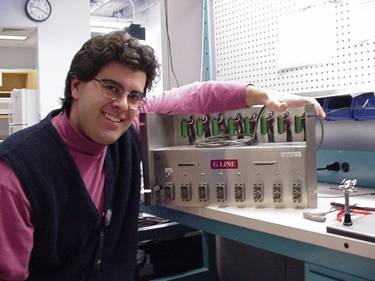
First CHESS Ph.D. Thesis Prize goes to Dr. Aaron Fleet
Dr. Aaron Fleet was
recently awarded the first-ever Ph.D. Thesis Prize given
by CHESS, the Cornell High Energy Synchrotron Source,
for his thesis entitled "Time Resolved X-Ray Scattering
During Strontium Titanate Homoepitaxy by Pulsed Laser
Deposition".
See the full article here and lightsources.org coverage here.
Cached article: lightsources.org Pdf
online: 07/06/2006
_______________________________________________
![]()
Six CHESS workshops will explore cutting-edge science with planned Energy Recovery Linac
Lauren Gold, of the Cornell Chronicle, writes in the June 1 edition: "With the design for the proposed Energy Recovery Linac (ERL) well under way and a prototype already under construction, scientists at the Cornell High Energy Synchrotron Source (CHESS) have invited researchers from around the world to a series of workshops focused on making the most of the facility's potential. The six two-day workshops will be held at the Robert Purcell Community Center between June 5 and June 24."
See the full article here and lightsources.org coverage here.
(STM image of InAs/GaSb surface by Roy Clarke, Codrin
Cionca, U. Michigan)
Cached articles:
Chronicle PDF,
lightsources.org PDF
online: 05/31/2006
_______________________________________________

Plastics in mind: Carnegie group sets benchmark for best conducting properties
Making plastic materials into good electrical conductors could have a myriad of technological applications, possibly revolutionizing the industrial production of printable electronics devices. A Carnegie Mellon group, led by Thomasz Kowalewski, used electrical measurement, atomic force microscope images and grazing-incidence small-angle x-ray scattering to study the periodic, stacked nanofibrils of conducting polymers. Read the Carnegie Mellon release here and the lightsources.org press release here.
Cached articles:
Carnegie Mellon PDF,
lightsources.org PDF
online: 03/29/2006
_______________________________________________
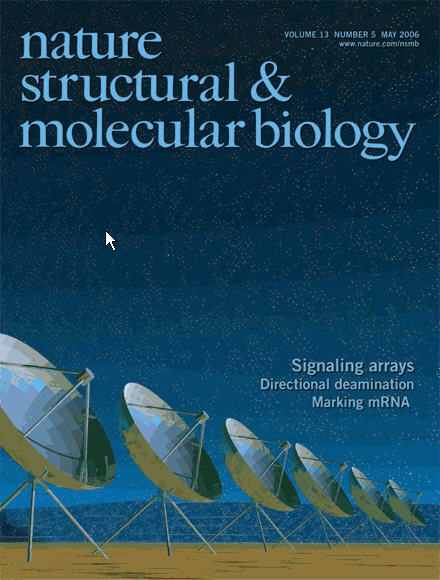
Bacteria use an array of sensors to detect low level signals
Combining x-ray crystallography with a new electron spin resonance spectroscopy, CHESS user Brian Crane and Jack Freed, both from Cornell University, determined that a common bacterium has an array of linked receptors that, when triggered, rearrange and reorient themselves to create a super sensitive chemical detection system. This work was the featured on the cover of the May 2006 issue of Nature Structural and Molecular Biology (here, may require subscription). Read a nice summary of the work by Krishna Ramanujan here (Cornell Chronicle); picked up by lightsources.org (here).
Cached articles:
Cornell Chronicle PDF,
lightsources.org PDF
online: 05/19/2006
_______________________________________________

X-ray Microradiography of Dendritic Alloy Microstructures
A new x-ray microradiograph instrument can see dendritic branches grow and move during high-temperature processing of metallic alloy materials. For the first time, high-energy x-rays allow materials scientists at CHESS to capture detailed dynamic images from dense, opaque metal alloys during solidification and zone melting. The x-ray camera uses a combination of fast video detection and automated high-resolution film to record detailed shapes and motion of microcrystalline primary, secondary, and tertiary branching dendrites. The alloy system studied was a tin-bismuth eutectic alloy, providing data that compared favorably with models of temperature gradient zone melting (TGZM).
Also see:
Complete article here (HTML)
(pdf)
online: 05/10/2006
_______________________________________________
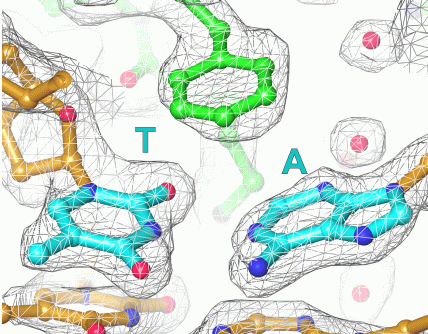
Finding and Fixing Damaged Spots in DNA
DNA glycosylases search for and repair damaged nucleosides in DNA. Crystal structures determined by Greg Verdine and coworkers show how an enzyme interrogates DNA to find the few bad nucleosides among the millions of good ones. A complex of a glycosylase with undamaged DNA shows how a phenylalanine sidechain acts as a probe of nucleoside pairs, while a different complex shows how a damaged base is flipped out from the DNA helix into the enzyme's active site for removal.
Also see:
Highlights of the article or
the complete article here (pdf)
online: 04/10/2006
_______________________________________________
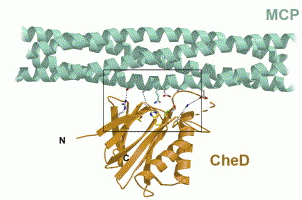
Chemotaxis Protein Structures Reveal how Bacteria control their Swimming
Bacteria swim towards attractants such as nutrients and away from repellants such as toxins, in the process of chemotaxis. Brian Crane and coworkers, working at the CHESS F2 station, have determined the structure of a complex (CheC:CheD) between two proteins which regulate this process. The work reveals how CheC inhibits CheD by blocking access to its active site, and suggests a mechanism for CheD functioning.
Also see:
Highlights of the article or
the complete article here (pdf)
online: 02/23/2006
_______________________________________________
New Synthetic Mirrors Provide High X-ray Beams for Custom Applications
X-ray synchrotron sources are important tools used by many thousands of researchers in the physical and biomedical sciences and engineering. X-ray measurements are both enabled and limited by available x-ray optics. Perfect crystals (silicon, diamond) are popular but their pristine crystalline lattices also limit energy bandwidths and significantly reduces x-ray throughput.
Also see:
Complete article here (pdf)
online: 01/6/2006
_______________________________________________
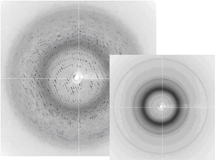
Researchers Develop New Method for High-Pressure Cryocooling of Protein Crystals
Protein crystallography is an essential technique in biomedical sciences. Use of this technique typically requires cooling crystals. A new high-pressure cryocooling method has been developed by Graduate Student, Chae Un Kim and his advisor, Sol Gruner, Director of the Cornell High Energy Synchrotron Source.
Also see:
Complete article here (pdf)
online: 01/6/2006
_______________________________________________
New Algorithm for Wave Propagation and Phase Retrieval in Fresnel Diffraction to Extract X-ray Images
The success of materials science today is largely based on x-ray diffraction from crystalline materials. However, not all materials of interest are in crystalline forms; examples include the majority of membrane proteins and many nanostructure specimens at their functioning levels. For these noncrystalline specimens, imaging at high spatial resolution offers the only alternative to obtain information on their internal structures.
Also see:
Published by Phys. Rev., B72, 033103, (2005)
(pdf)
Complete article here (pdf)
online: 01/6/2006
_______________________________________________
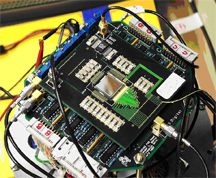
X-ray Detector Workshop Proposes Coordinated Detector Development for Synchrotron Facilities
X-ray synchrotron sources are important tools used by many thousands of researchers in the physical and biomedical sciences and engineering. X-ray detectors are rate limiting for synchrotron data collection.
On December 8-9, 2005 over 70 participants from the U.S and Europe met at the APS to attend a detector workshop sponsored by the NSF. The workshop was originally scheduled for the SRI2005 meeting in Baton Rouge, but cancelled because of hurricane Katrina. The workshop was an update to the Workshop on Detectors for Synchrotron Radiation that was held in October 2000. The program committee for the workshop had members from all U.S. synchrotrons.
Complete article here (pdf)
online: 01/6/2006
_______________________________________________
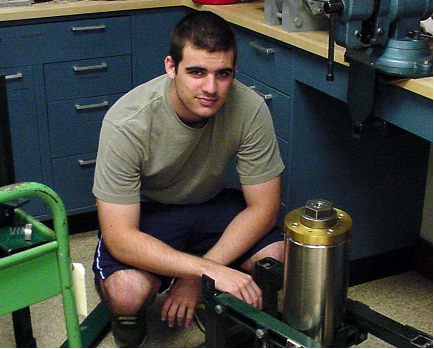
New Synthetic Mirrors Provide High X-ray Beams for Custom Applications
A comprehensive understanding of phenomena at extremely high pressures and temperatures, like those in the center of the Earth, relies on a combination of complementary experimental techniques. During the last few years, the Cornell High Energy Synchrotron Source (CHESS) has concentrated efforts on an integrated approach to study pressure-volume-temperature (PVT), equations of state (EOS) and phase transitions. Current capabilities are based on diamond anvil cells (DAC) and a variety of optical and x-ray techniques.
Also see:
CHESS News Magazine 2005 article on
research activities in
high-pressure at CHESS
Complete article here (pdf)
online: 01/6/2006
_______________________________________________
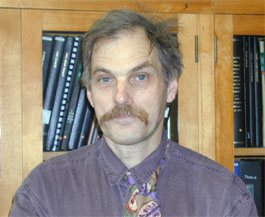
User Tammo Steenhuis Wins 2005 Henry Darcy Medal for Contributions to Water Research
Tammo Steenhuis, professor of biological and environmental engineering at Cornell University, is the recipient of the 2005 Henry Darcy Medal from the European Geophysical Society. Steenhuis, a soil and water engineering expert, was cited "for his outstanding contributions to understanding the processes that govern contaminant movement in rural watersheds. ...An important part of his legacy is the large number (more than 60) of graduate students who passed through 'his' soil and water laboratory."
See the Cornell News Service article for the original text (pdf)
A part of his research program involved x-ray studies of fluid and contaminant flow in soils. See the CHESS Research highlight on this work here.
online: 01/06/2006
_______________________________________________
New Technique for X-ray Markers at High Pressure in the Diamond Anvil Cell
Scientists at Cornell, CHESS, and The Aerospace Corporation have collaborated to invent a new technique to improve pressure measurements in diamond-anvil cells."X-ray markers as powder or foil can interfere with optical studies on a sample. Use of the gasket itself as an x-ray marker requires careful collimation of the x-ray beam so that only the gasket material adjacent to the sample is studied (the pressure drops rapidly as the radius increases in the gasket). By depositing a thin half-micron thick marker on the wall of the sample hole, these problems are eliminated and a large beam can be used, but for pressure measurements only the submicron layer will be involved." ©2005 American Institute of Physics.Review of Scientific Instruments; 76, 036102 (2005) (pdf)
online: 01/06/2006
_______________________________________________
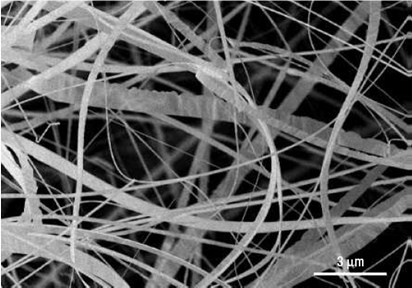
Scientists Discover Ultrastable One-dimensional ZnS Nanobelts
Scientists from Los Alamos, Cornell, Arizona, Georgia and The Carnegie Institute "report the experimental discovery of ultrastable one-dimensional wurtzite ZnS nanobelts, the morphology-tuned explosive transformation mechanism to the spahalerite form, and a model for the kinetic behavior. High-pressure synchrotron X-ray diffraction demonstrates that wurtzite ZnS nanobelts have a wide field of structural stability up to 6.8 GPa, remarkably different from the bulk and three-dimensional monodispersed spherical nanoparticles...".
Nature Materials; 4, 922-927 (2005) (pdf)
Also see:
Nature Materials; 4,
883-884 (2005)
(pdf)
online: 01/06/2006
_______________________________________________
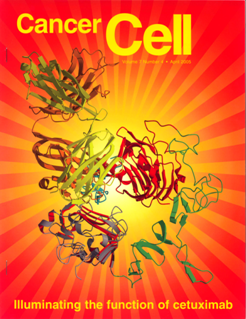
Scientists Uncover Structural Basis for Inhibition of the Epidermal Growth Factor Receptor by Cetuximab
CHESS user group led by Kathryn M. Ferguson, University of Pennsylvania School of Medicine had a recent cover story describing their work. “Recent structural studies of epidermal growth factor receptor (EGFR) family extracellular regions have identified an unexpected mechanism for ligand-induced receptor dimerization that has important implications for activation and inhibition of these receptors. Here we describe the 2.8 Å resolution X-ray crystal structure of the antigen binding (Fab) fragment from cetuximab (Erbitux), an inhibitory anti-EGFR antibody, in complex with the soluble extracellular region of EGFR (sEGFR). The sEGFR is in the characteristic “autoinhibited” or “tethered” inactive configuration. Cetuximab interacts exclusively with domain III of sEGFR, partially occluding the ligand binding region on this domain and sterically preventing the receptor from adopting the extended conformation required for dimerization. We suggest that both these effects contribute to potent inhibition of EGFR activation.”
Complete article:
Cancer Cell, Vol 7, 301-311, (2005) (pdf)
online: 01/6/2006
_______________________________________________
Carnegie-Mellon Group Uses Zone-casting Method to Create Ordered Nanostructured Carbon
“Large-scale alignment of lamellae in thin films of diblock copolymers containing polyacrylonitrile and poly (n-butyl acrylate) was achieved by casting copolymer solution on a silicon substrate moved away at a constant speed from the casting nozzle (zone-casting). Grazing incidence small-angle X-ray scattering revealed that the lamellae, which were perpendicular to the substrate, were also aligned over macroscopic scale in the direction perpendicular to the casting direction. Such long-range ordered block copolymer films were then converted by pyrolysis into nanostructured carbons, with excellent preservation of lamellar morphology and orientation.”
Complete article:
J. Am. Chem. Soc.; (Communication);
127(19), 6918-6919, (2005) (pdf)
online: 01/6/2006
_______________________________________________
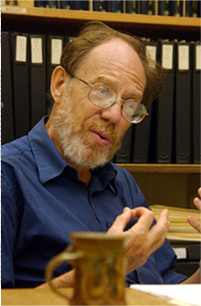
Achievements of Longtime CHESS User Michael Rossmann Celebrated
The lifetime achievements of Michael Rossmann were celebrated during a symposium entitled “A Celebration of Structural Biology at Purdue University” held on April 9, 2005. Rossmann, the Hanley Distinguished Professor of Biological Sciences and long-time CHESS user, is best known for solving crucial mysteries about viruses. In 1970, he and his team of research associates used five years of research data to build a model of an intracellular enzyme, the protein lactate dehydrongenase, or LDH, which is vital to metabolism. In 1979, Rossmann and associates became the second group in the world to map a virus when they constructed a three-dimensional model of the Southern Bean Mosaic Virus. Then in 1985, in what still is hailed as his crowning achievement, he became the first scientist to build a model of human rhinovirus-14, HRV-14, one of about 100 known cold virus strains. As a young research scientist Rossmann was more interested in satisfying his own curiosities in molecular biology than in pursuing high profile research. This curiosity has led to publishing more than 375 articles in scientific journals, numerous awards including the Ewald Prize from the International Union of Crystallography in 1996 and being named as a Fellow of the American Association of the Advancement of Sciences in 1999. Through the years Rossman has been an inspiration to those in the structural biology field, with his extreme enthusiasm for science and his infectious curiosity.
Complete article:
Purdue News (pdf)
online: 01/6/2006
_______________________________________________
Protein Society Hans Neurath Award to Roderick MacKinnon
Roderick MacKinnon, Professor of Molecular Neurobiology and
Biophysics at the Rockefeller University was received
the Hans Neurath Award during the 19th Annual Symposium
of the Protein Society, August 2005. The award, given by
the Hans Neurath Foundation, recognizes an individual
who has made a recent contribution of unusual merit to
basic research in the field of protein science,
including the chemistry, design, folding, structure or
biological function of proteins. Dr. MacKinnon’s
research, which was carried out primarily at the Cornell
High Energy Synchrotron Source (CHESS) and the National
Synchrotron Light Source (NSLS) at Brookhaven, changed
the landscape of our understanding of ion channel
permeation and gating in a few short years, and has
taught us how protein molecules ‘work’ as potassium
channels. MacKinnon stunned the research community in
1998 when he determined the full three-dimensional
structure of a potassium channel. Thanks to this
contribution, we can now visualize ions flowing through
channels in response to assorted cellular signals. His
group has continued to press forward our understanding
by solving high-resolution structures of ion channels in
their open and closed states, through crystallization of
a Cl-channel, and through the first structure of a
voltage-gated K+ channel.
The Howard Hughes Medical Institute Research News
recently highlighted an article on “Structure of
Biological "Transistor" Detailed in Higher Organisms”.
(pdf)
online: 01/6/2006
